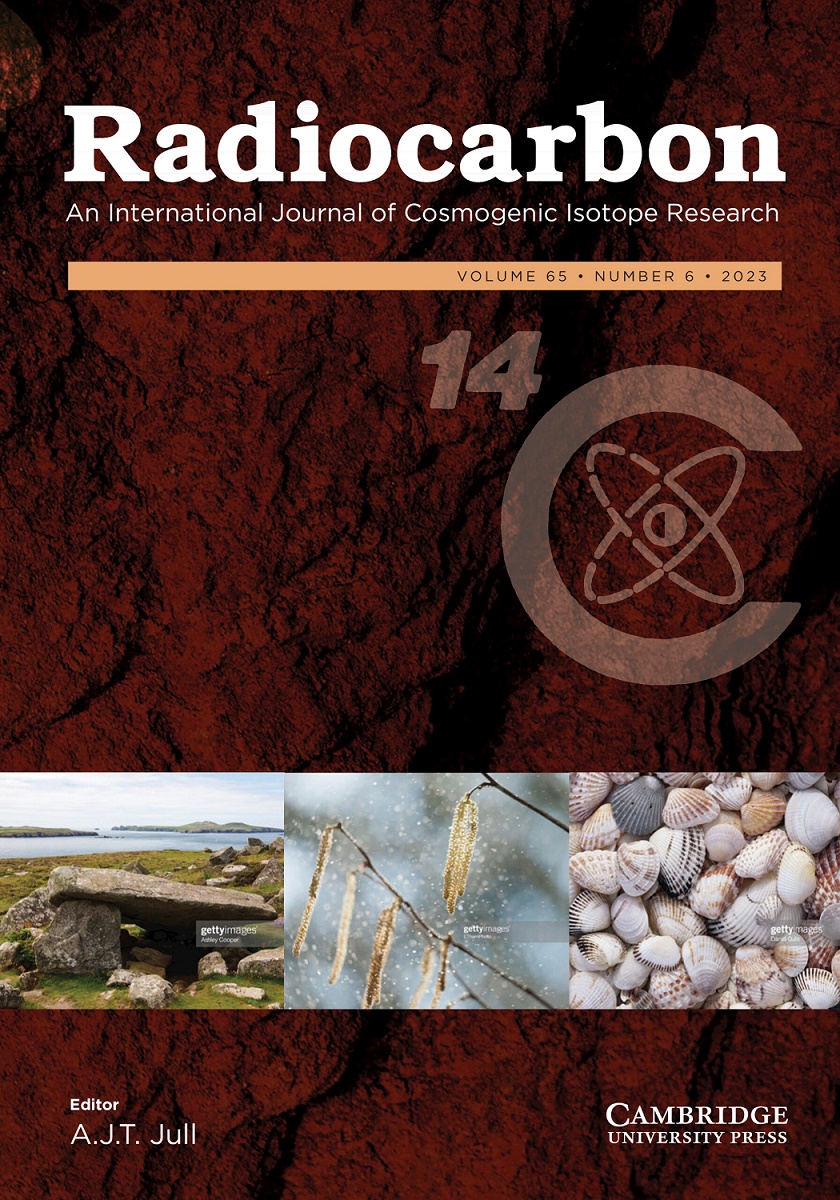与米里纳卡斯特罗(希腊莱姆诺斯岛)岩石切割特征有关的样本的放射性碳年代测定以及爱琴海青铜时代晚期区域海洋储层效应的计算
IF 1.3
3区 地球科学
Q2 GEOCHEMISTRY & GEOPHYSICS
引用次数: 0
摘要
卡斯特罗半岛位于北爱琴海的莱姆诺斯岛西海岸,是该岛首府米里纳向西延伸的部分。正在对这一复杂遗址的岩石切割特征和岩石艺术进行的研究项目包括为期五年(2002-2007 年)的地下调查,在此期间,除其他移动发现外,还收集了与岩石切割特征相关的木炭和贝壳样本。随后,为了了解岩石切割遗址的年代,还进行了基于 14C 的调查。因此,本文的目的是对出土的人为沉积物进行 AMS 测定,并计算青铜时代晚期的区域海洋储层效应。我们的研究结果表明,这些沉积物的年代跨度为公元前 13 世纪至公元 6 世纪。此外,两对木炭-贝壳样本的 14C 年龄显示,该地区公元前 13 世纪至公元前 10 世纪的平均海洋储层年龄 R(t) 为 175 ± 59 14C 年,而当地海面储层的平均偏差 ΔR 为 -288 ± 108 14C 年(在 1σ 以内)。本文章由计算机程序翻译,如有差异,请以英文原文为准。
Radiocarbon dating of samples connected to rock-cut features at Myrina Kastro (Lemnos Island, Greece) and calculation of the regional marine reservoir effect in the Late Bronze Age in the Aegean Sea
The Kastro peninsula constitutes the extension towards the West of Myrina, the Lemnos capital, on the western coast of the island, in the North Aegean Sea. The ongoing research project on rock-cut features and rock-art of this complex site included a five-year (2002–2007) subsurface investigation, during which, among other mobile finds, charcoal and seashell samples were also collected, associated in situ to rock-cut features. Subsequently, in an attempt to bring about information on the dating of the rock-cut site, an investigation based on 14 C has also been undertaken. Therefore, the purpose of the present paper is the AMS dating of the unearthed anthropogenic deposits and the calculation of the regional marine reservoir effect during the end of the Late Bronze Age. Our results show that the age of the deposits is spanning from the 13th century BC till the 6th century AD. Moreover, the 14 C ages of two pairs of charcoal-seashell samples showed that the mean marine reservoir age R(t) in this region from the 13th to the 10th centuries BC is 175 ± 59 14 C yrs and the mean local sea surface reservoir deviation ΔR is found to be –288 ± 108 14 C yrs (within 1σ).
求助全文
通过发布文献求助,成功后即可免费获取论文全文。
去求助
来源期刊

Radiocarbon
地学-地球化学与地球物理
CiteScore
16.20
自引率
6.00%
发文量
85
审稿时长
6-12 weeks
期刊介绍:
Radiocarbon serves as the leading international journal for technical and interpretive articles, date lists, and advancements in 14C and other radioisotopes relevant to archaeological, geophysical, oceanographic, and related dating methods. Established in 1959, it has published numerous seminal works and hosts the triennial International Radiocarbon Conference proceedings. The journal also features occasional special issues. Submissions encompass regular articles such as research reports, technical descriptions, and date lists, along with comments, letters to the editor, book reviews, and laboratory lists.
 求助内容:
求助内容: 应助结果提醒方式:
应助结果提醒方式:


